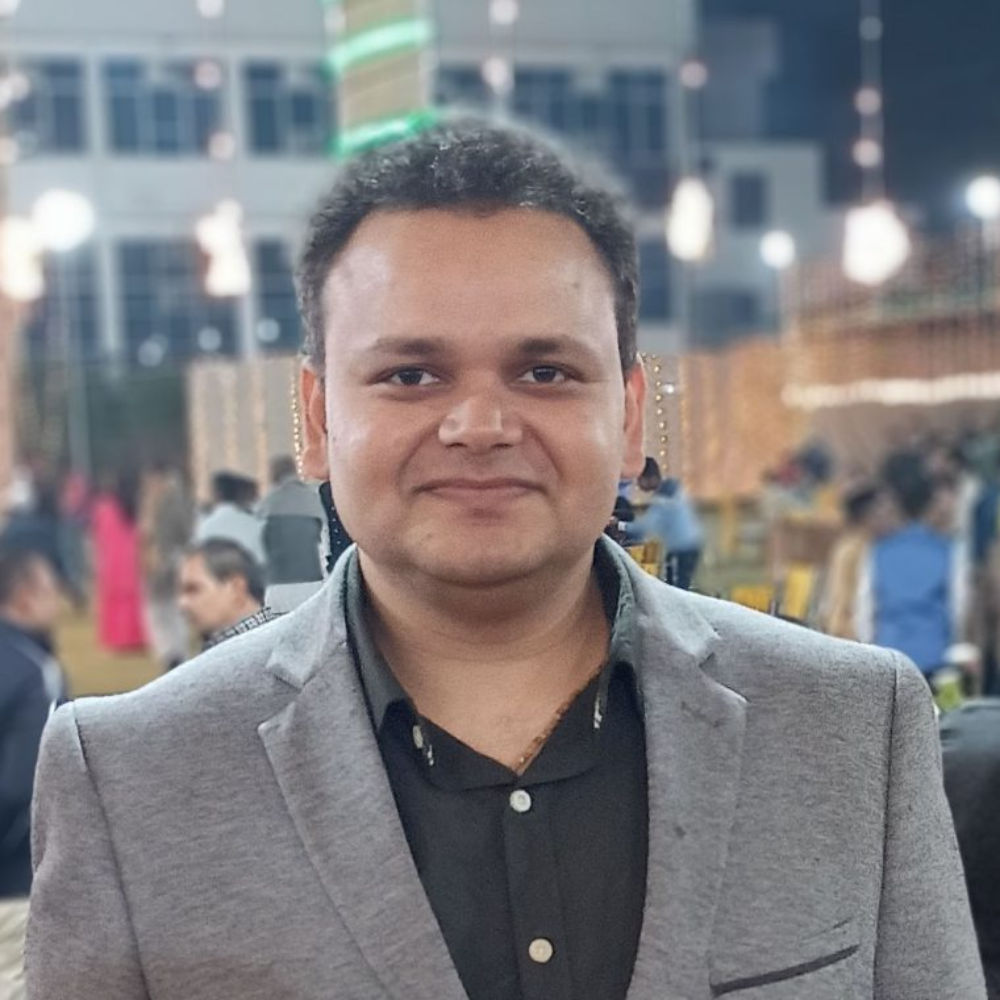Optoelectronics, Quantum Dot-Light Emitting Devices, High efficiency solar cells, Microelectronic Fabrication, Organic Semiconductors, Fabrication and modeling of organic LEDs and Solar cells,
| From |
To |
Designation |
Organisation |
| 2013 |
2014 |
Process Development Engineer Sr. |
Cypress Semiconductor, Bloomington, MN, USA |
| 2014 |
2020 |
Assistant Professor |
IIT Roorkee, Uttarakhand, India |
| 2020 |
Current |
Associate Professor |
IIT Roorkee, Uttarakhand, India |
| Degree |
Subject |
University |
Year Studied |
| Ph.D. |
Electrical Engineering |
University of Minnesota Twin Cities, USA |
2013 |
| MS |
Electrical Engineering |
University of Minnesota Twin Cities, USA |
2009 |
| B.Tech |
Electrical Engineering |
IIT Delhi, India |
2007 |
| Title |
Course Code |
Course |
Semester |
| Digital Logic Design |
ECN-104 |
B.Tech. |
Spring 2015-2021 |
| MOS Device Physics |
ECN-576 |
M.Tech |
Autumn 2014-2017 |
| Semiconductor Devices |
ECN-242 |
B.Tech. |
Autumn 2019-2020 |
| Control Systems |
ECN-222 |
B.Tech. |
Spring 2023 |
| Machine Learning in Semiconductor Manufacturing |
ECN-358 |
B.Tech. |
Autumn 2021-2022 |
| VLSI Technology |
ECN-577 |
M.Tech. |
Spring 2022 |
| Introduction to Computer Programming |
ECC-101 |
B.Tech. |
Autumn 2023 |
| Topic |
Scholar Name |
Status of PhD |
Registration Year |
| Organic Solar Cells |
Upendra Kumar Verma |
Completed |
2014 |
| Silicon Carbide devices |
Satyendra Mourya |
Completed |
2014 |
| Quantum Dot LEDs |
Aditya Nath Bhatt |
Completed |
2015 |
| Metal-organic Framework devices |
Medha Joshi |
Ongoing |
2017 |
| Multi exciton generation in quantum dot solar cells |
Varun Kumar Singhal |
Ongoing |
2018 |
| Photomultiplication in organic solar cells |
S. Sridhar |
Ongoing |
2019 |
| Green perovskite solar cells |
Ajay Kumar Sahu |
Ongoing |
2021 |
| [Exploratory stage] |
Nilesh Kumar Jangir |
Ongoing |
2023 |
- S. Mourya, A. Kumar, J. Jaiswal, G. Malik, B. Kumar, and R. Chandra, Development of Pd-Pt functionalized high performance H2 gas sensor based on silicon carbide coated porous silicon for extreme environment applications, Sensors and Actuators B: Chemical, 283, pp. 373383 (2019). https://doi.org/10.1016/j.snb.2018.12.042
- U.K. Verma, A.N. Bhatt, and B. Kumar, Impact of Capture/Emission Time Constant at Donor-Acceptor Interface on Current-Voltage Characteristics of Hybrid Organic/Inorganic Quantum Dot Solar Cells, IEEE Electron Device Letters, 39(10), pp. 1588-1591 (2018). https://doi.org/10.1109/LED.2018.2867598
- S. Mourya, J. Jaiswal, G. Malik, B. Kumar, and R. Chandra, The Role of the Substrate on Photophysical Properties of Highly Ordered 15R-SiC Thin Films, Journal of Electronic Materials, 47(9), pp. 52595268 (2018). https://doi.org/10.1007/s11664-018-6411-6
- S. Mourya, J. Jaiswal, G. Malik, B. Kumar, and R. Chandra, Structural and optical characteristics of in-situ sputtered highly oriented 15R-SiC thin films on different substrates, Journal of Applied Physics, 123, 23109 (2018). https://doi.org/10.1063/1.5006976
- U.K. Verma, and B. Kumar, Charge transport in quantum dot organic solar cells with Si quantum dots sandwiched between poly(3-hexylthiophene) (P3HT) absorber and bathocuproine (BCP) transport layers, Journal of Applied Physics, 122, 153104 (2017). http://dx.doi.org/10.1063/1.4996845
- B. Kumar, S.A. Campbell, and P.P. Ruden, Modeling Charge Transport in Quantum Dot Light Emitting Devices with NiO and ZnO transport layers and Si Quantum Dots, Journal of Applied Physics, 114, 044507 (2013). http://dx.doi.org/10.1063/1.4816680
- B. Kumar, R. Hue, W.L. Gladfelter, and S.A. Campbell, Comparing direct charge injection and Forster energy transfer into quantum dots in hybrid organic/inorganic quantum dot light emitting devices , Journal of Applied Physics, 112, 034501 (2012). http://dx.doi.org/10.1063/1.4740234
- V.N. Singh, A. Khare, B. Kumar, and B.R. Mehta, Synthesis of single phase cubic tin nitride nanoparticles by atmospheric pressure-halide vapor phase epitaxy, Solid State Sciences, Volume 10, Issue 5, May 2008, Pages 569-572. http://dx.doi.org/10.1016/j.solidstatesciences.2007.10.007
- V.N. Singh, G. Partheepan, B. Kumar, and A. Khare, Growth of indium nitride nanopetal structures on indium oxide buffer layer, Materials Express, Volume 3, Number 4, Dec. 2013, Pages 360-364. http://dx.doi.org/10.1166/mex.2013.1132


